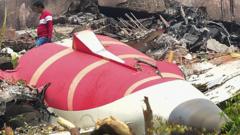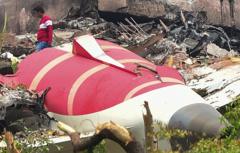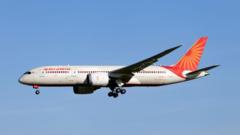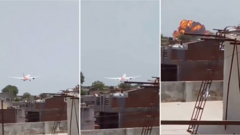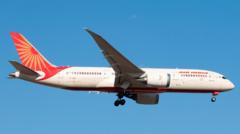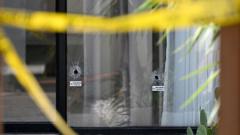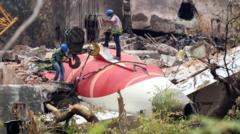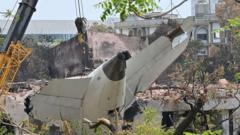Air India Flight 171, which tragically crashed shortly after takeoff in Ahmedabad, is under investigation as experts examine flight data recorders, engine conditions, and maintenance logs to determine what went wrong.**
Investigators Pursue Clues in Air India Flight 171 Crash**

Investigators Pursue Clues in Air India Flight 171 Crash**
The investigation into the Air India Boeing 787 crash is underway, focusing on cockpit data and wreckage analysis to uncover the cause of the disaster.**
The tragic crash of Air India Flight 171 shortly after its departure from Ahmedabad has raised numerous questions regarding aviation safety. Just 40 seconds into its flight, the Boeing 787 Dreamliner went down in a populated area, leading to an urgent investigation to uncover the cause. The daunting task for investigators includes piecing together the wreckage and analyzing the cockpit voice and flight data recorders—known as the "black boxes"—to understand the series of events that led to this disaster.
The flight, which was en route to London Gatwick, had 242 passengers onboard, along with nearly 100 tons of fuel. Just after taking off at 1:39 PM local time, a mayday call was issued but was followed by catastrophic silence as the plane lost altitude and crashed. Experts categorize this event as extremely rare; it occurred just 30 seconds after takeoff.
Captain Kishore Chinta, a former investigator, labeled this incident as a "controlled flight into terrain" phenomenon, emphasizing the need for an extensive investigation. Could the crash have been due to dual engine failures, potentially from bird strikes or fuel issues? Was it improper mechanical servicing or crew error that led to fuel cutoff? Each possible scenario requires detailed examination.
Investigators are meticulously examining the wreckage, focusing on the two engines as they could provide essential insights into whether they were operational at the time of impact. The damage patterns can reveal critical information regarding the engines' performance before the crash. The information captured by the Enhanced Airborne Flight Recorders will be pivotal, as it logs vital flight and cockpit operations, helping to reconstruct the final moments of the flight.
If engine records confirm that power was being generated, the investigation would shift to examining the position of the aircraft's flaps and slats—crucial components that aid in lift during low-speed scenarios like takeoff. Should deficiencies in the flight management control system be identified, concerns would arise not only for Air India but for Boeing and the global aviation community.
India's civil aviation ministry has stated there has been no indication of prior faults within the aircraft or crew, as ongoing inspections of other Air India 787s have shown compliance with safety standards. Boeing has acknowledged its role and will defer to Indian authorities for further details about the investigation progress.
Data analysis is expected to be detailed and complex, but experts are hopeful that early clues will emerge in the coming days. All physical evidence, from maintenance records to cockpit assessments, will be scrutinized as investigators aim to piece together the mystery of Flight 171.
With technological advancements enhancing the capabilities of flight recorders today, investigators can assess more parameters than ever before. This development promises a more comprehensive understanding of what might have led to this calamitous event, which continues to captivate and concern aviation authorities and the flying public alike.


